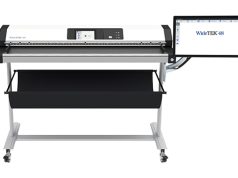
Let’s face it: today’s consumers are overwhelmed with their photo collections! They have thousands of images clogging up their phones, tablets, iPads, computers and memory cards. They have no system for photo organizing.
In addition, they have photos on Facebook, Instagram, Google Photos, Dropbox, Shutterfly and a myriad of other cloud options. When you include a lifetime of photos and slides in bins, shoeboxes, fading photo albums and various other storage containers, it’s really no wonder they are paralyzed.

Consequently, people cannot even begin to print and enjoy their photos without an organizational system in place. This has led to a growing need for assistance and an opportunity for retail stores to step in and offer new solutions.
People are incapable of enjoying their photos in their current disarray; they need the help of personal photo organizers (PPOs) who either do it for them, teach them to do it themselves or do it with them.
Who Uses Professional Photo Organizers?
Simple—your customers do. Although often women, they can be anyone charged with being the keeper of family artifacts, memorabilia and photos. They have a love of photography, family traditions and stories. And in some sense, they have become the family genealogist. That responsibility can be overwhelming.

While the age range of these clients is expansive, they generally fall into one of three categories: moms with school-age kids; people experiencing a life-changing event; and newly retired, young seniors. Their desire to capture family history and leave a legacy is what binds this group.
These people are often inundated with time constraints that hinder their ability to manage and enjoy their photos. This is, of course, frustrating and disheartening. A good photo organizer can rapidly change the sense of paralysis brought on by a person’s inability to invest the large amounts of time required for photo organizing.
PPO Retailer Testimonials
I recently interviewed two members of the Association of Personal Photo Organizers (APPO) who offer photo-organizing services at their store locations: Becky Ball and Judi Weber.
Becky Ball is located in Dover, New Hampshire, where she works with Steve Frank at Photosmith. Judi Weber copartners Quality “Plus” Photo Service in Palos Heights (a suburb of Chicago) with her husband, Mike. I asked them a few questions about the value of utilizing photo-organizing services in their retail locations.
Cathi Nelson: What is the biggest challenge your clients face when they come into your store?
Becky Ball: Many have printed photos thrown in boxes and bags from their days of film cameras—or that they’ve just inherited from a parent. They have no idea how to begin to organize and safeguard them. But they know they don’t want to throw them away or lose them.
They also have digital photo files cluttering their cell phones and don’t know how to get them off or print them. I am seeing this more and more. When I hook up their phone to our kiosk, they literally have anywhere from 500–1,000 pictures! I see this almost daily. They are amazed at how easy it is to hook up their phone, view their pictures and select them to print.
Judi Weber: The biggest challenge is the photo dilemma of “how can you make this happen?” In our front window, we have a display showing folks we understand their photo mess and can help them get their memories back into their lives where they belong.
What solutions do you offer?

BB: We offer just about every solution. But if customers are truly looking to preserve and archive, I recommend they choose their most cherished, or one-of-a-kind, photos and memorabilia for us to scan and digitize. We can then put the digitized version onto a CD or thumb drive. I also recommend they print their photos to put in traditional albums or make a digital photo book.
JW: We currently offer scanning to DVD and flash drives, as well as to external drives. Along with these services, we make slide shows and transfer phone images and video clips to the customer’s preferred destination. We will be adding branded USBs with packaging and stocking external hard drives for client convenience.
Do you offer to go to the client’s home?
BB: Currently, I am the only person who goes to a client’s home. But I am getting so busy with that end as word gets around and referrals come in. So, we need to hire or train another staff member very soon.
JW: We don’t offer to go to clients’ homes. All of our equipment is in our retail location. I am the only archiving specialist on staff to help people get organized, and I charge additional fees per hour for my services.
What tips would you give to retail stores to help address the problem of photo organizing?
BB: Get a staff member trained as a PPO or find one in your area and contract/partner with them. Do not be overwhelmed by, or turn away, the customers who ask about photo organizing solutions. This is becoming a huge need and photo retailers can create a brand-new turnkey business that only PPOs are offering right now.
Market slide shows, photo books and traditional albums as archiving solutions, not just fun ideas for a birthday or wedding. Carry traditional photo albums and/or archival storage solutions and market them. People don’t realize that photo albums still exist and the younger generation doesn’t even know what they are!
JW: Show your services in the window or in your showroom. Get creative and eye-catching. We put a 1950s TV in the window with movies running 24 hours a day. People stand and watch, then they go home to bring us their old memories.
Educate at libraries, senior groups, etc., about the importance of the legacy they want to leave their families.
Prepare your staff with adequate knowledge and handout materials to make the walk-in customer feel like they came into “the right place” to leave their coveted memories. Try to do many of the required services on-site.
Can you share one story of a client you helped?
BB: One very large job I am working on is with Beth, who is turning 60 soon. She hired me to help her organize her lifetime of printed photos as well as her digital photos. We work together a couple of hours a day, a couple of times a week. We’re tagging and rating both printed and digital photos she wants to turn into a slide show. All the printed photos for the slide show have had to be scanned.
JW: The most recent job was 48 magnetic photo albums of trips around the world from 1984 until 2010. The request was to remove only the photos, scan them and provide digital jpegs on a DVD as well as a flash drive. In addition, two APPO large legacy boxes filed by trip and year were included in the cost. Jennifer is 53 years old and is saving her parents’ lifetime of travels.
About the Association of Personal Photo Organizers (APPO)
The Association of Personal Photo Organizers, founded in 2009, is a membership association that trains, supports and provides industry tools to its members—known as personal photo organizers (PPOs). The APPO equips them to rescue, manage, organize as well as save consumers’ photos. These solutions allow consumers to easily find, preserve and share their stories.
With such an overwhelming need, APPO has grown to 700 members throughout the United States, Canada, Australia and the United Kingdom. Additionally, along with supporting and training its members, APPO educates the public about the importance of photo organizing, preservation and storytelling.
In addition, professional photo organizers are a natural complement to a retail photo business. You can learn more at appo.org to help your clients overcome their photo organizing anxiety.





